Affiliate links on Android Authority may earn us a commission. Learn more.
Why is interest in new smartphones falling?
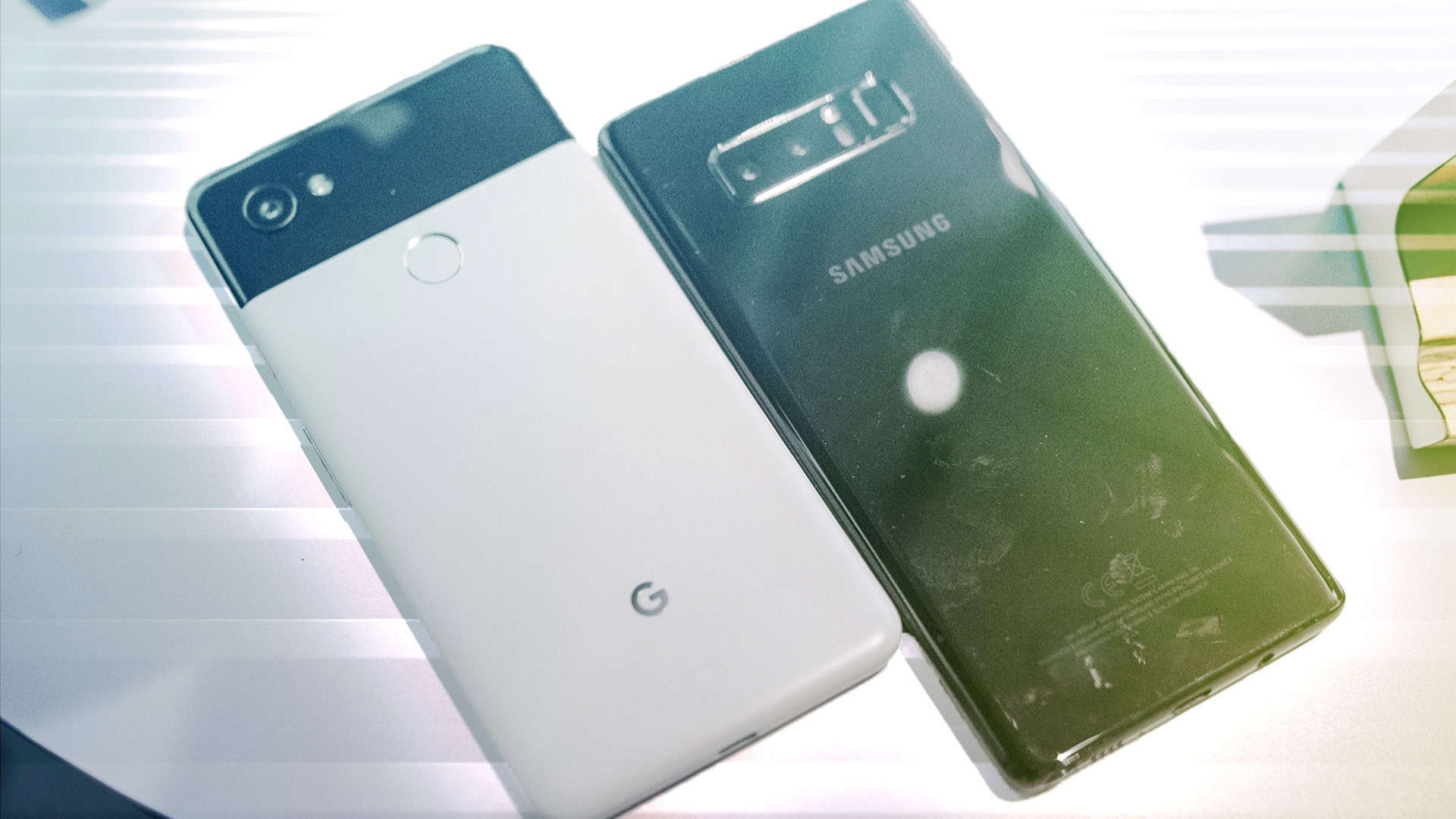
There’s no doubt about it: comparing the year-on-year data, interest in new smartphone launches is falling, and falling dramatically.
It hasn’t just been over the last few launches, either – this downswing has been happening for years.
Google Trends data shows it clearly, whether you’re looking at recent Galaxy S line launches:
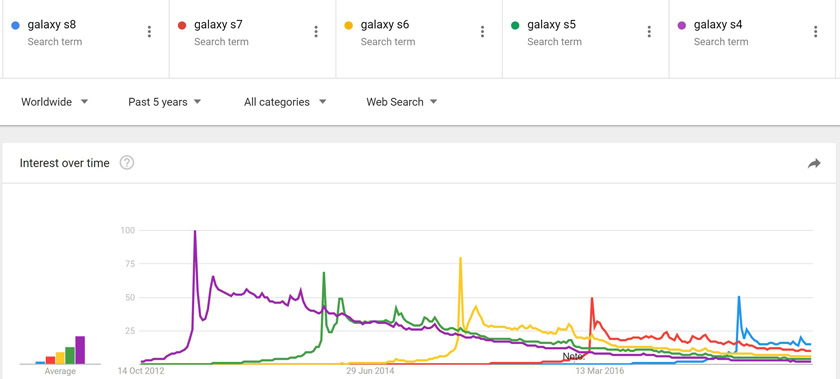
or Apple iPhone launches:
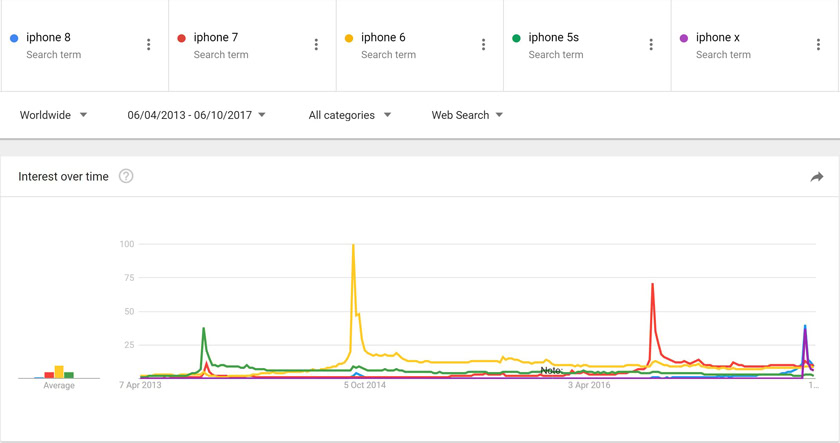
No phone launch has come close to the iPhone 6 launch in terms of interest.
Just so we’re comparing Apple with Samsung directly on the same scale, here’s Samsung’s biggest launch compared to the iPhone 6:
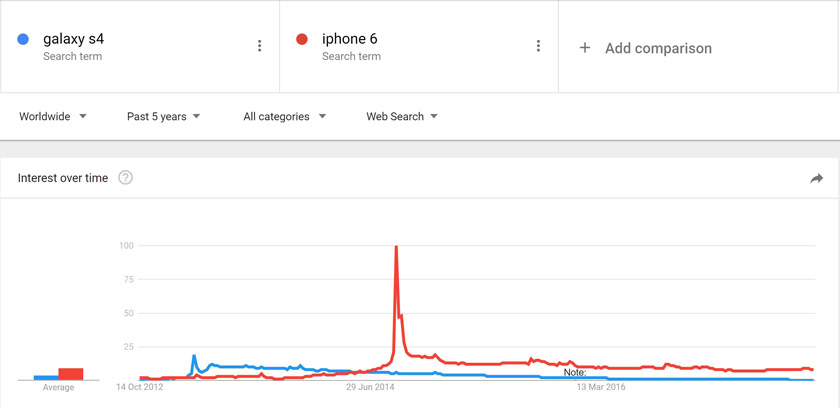
It’s a stark difference but not altogether surprising.
We may be less interested in new launches, but sales aren’t falling. In fact, global sales of smartphones have risen. That has been driven by increased adoption in emerging markets like India. Apple and Samsung products aren’t as relevant there, but more cost effective smartphones are finding enthusiastic consumers.
Still, the graphs show us clearly: despite more smartphones than ever, consumers in the West are no longer as intrigued by what’s coming next.
Why the iPhone 6 was the last great launch
The iPhone 6 and the iPhone 6 Plus were Apple’s first forays into making bigger devices, something that Android makers had already proven to be a success.
The iPhone 5 was acclaimed as one of Apple’s best ever devices. By the time the 5s rolled out, even though it was improved and held on remarkably well, the size of its 4-inch display was limiting.
Apple finally introducing a 5.5-inch smartphone was a big draw, but appears to have been the last exciting change for iPhone fans.
The 4.7-inch iPhone 6 finally packed a bigger screen in a similar sized handset, while the 5.5-inch Plus suited the enthusiast ‘phablet’ market, as it was called then.
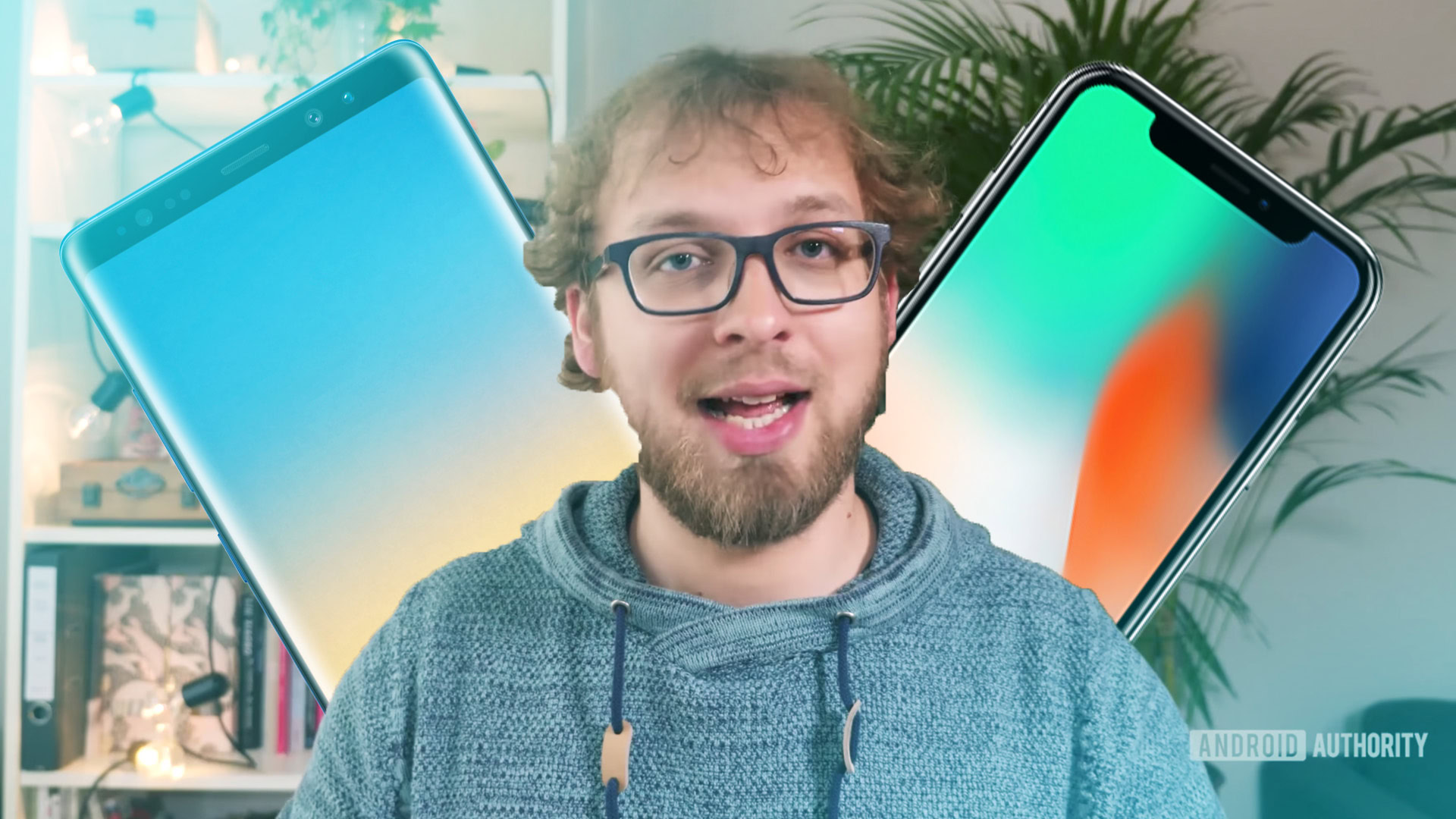
The iPhone 6 also introduced Apple Pay and added support for NFC. The Apple Watch was announced at the same time, which prompted even more interest.
The iPhone didn’t stop selling through the 6s, 7, 7s, and now iPhone 8 releases, but Apple buyers were clearly less excited as time wore on.
The technology life-cycle
Since 2007, smartphone growth and innovation have been fast moving. In the early days, advances came thick and fast. The industry sprinted towards new devices with bigger screens, better cameras, faster processing, waterproofing and so on.
Innovation has slowed dramatically in terms of features that could amaze us. Manufacturers are now struggling to differentiate their products.
New phones are still cranked out each year and they are better in most ways, but the improvements are all mostly incremental. They always have more processing and RAM, better cameras, and new, sleeker designs.
But there clearly hasn’t been anything that’s grabbed attention quite like the first large-screen iPhone.
This might be explained by the technology life-cycle, which can be shown as an S-curve:
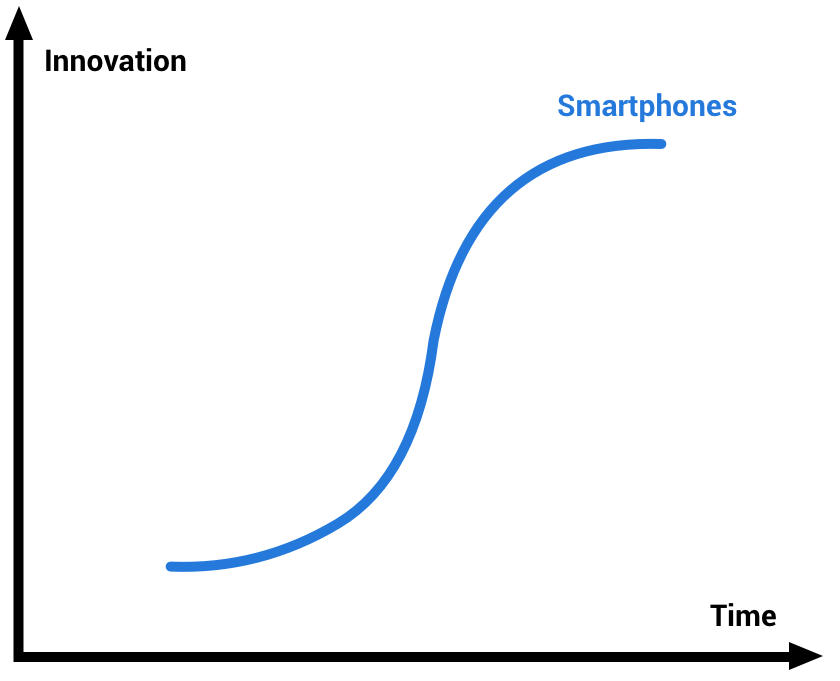
Just as innovation has plateaued over time, so has interest. The excitement just isn’t there anymore.
Flagships
Increasing competition, similarity, and market saturation can lead to it being unclear why you’d need a flagship when plenty of good smartphones don’t cost a lot.
Being a generation or two behind the latest smartphone used to invoke a fear of missing out, but that’s no longer the case. There are precious few innovations in this year’s phones that aren’t already in last year’s.
It’s understandable that people are trying to get more out of their current phones when the alternative can run beyond $800
Cost is even more of a major concern now, too. The iPhone 6 debuted starting at US$649, and with the announcement of the X, prices have passed $999. There’s a natural inclination to ignore the latest devices when they start to look out of reach.
It’s understandable that people are trying to get more out of their current phones when the alternative can run beyond $800. The OnePlus 5 looks like a winner in 2017 just for this reason. It’s a strong phone with a great price.
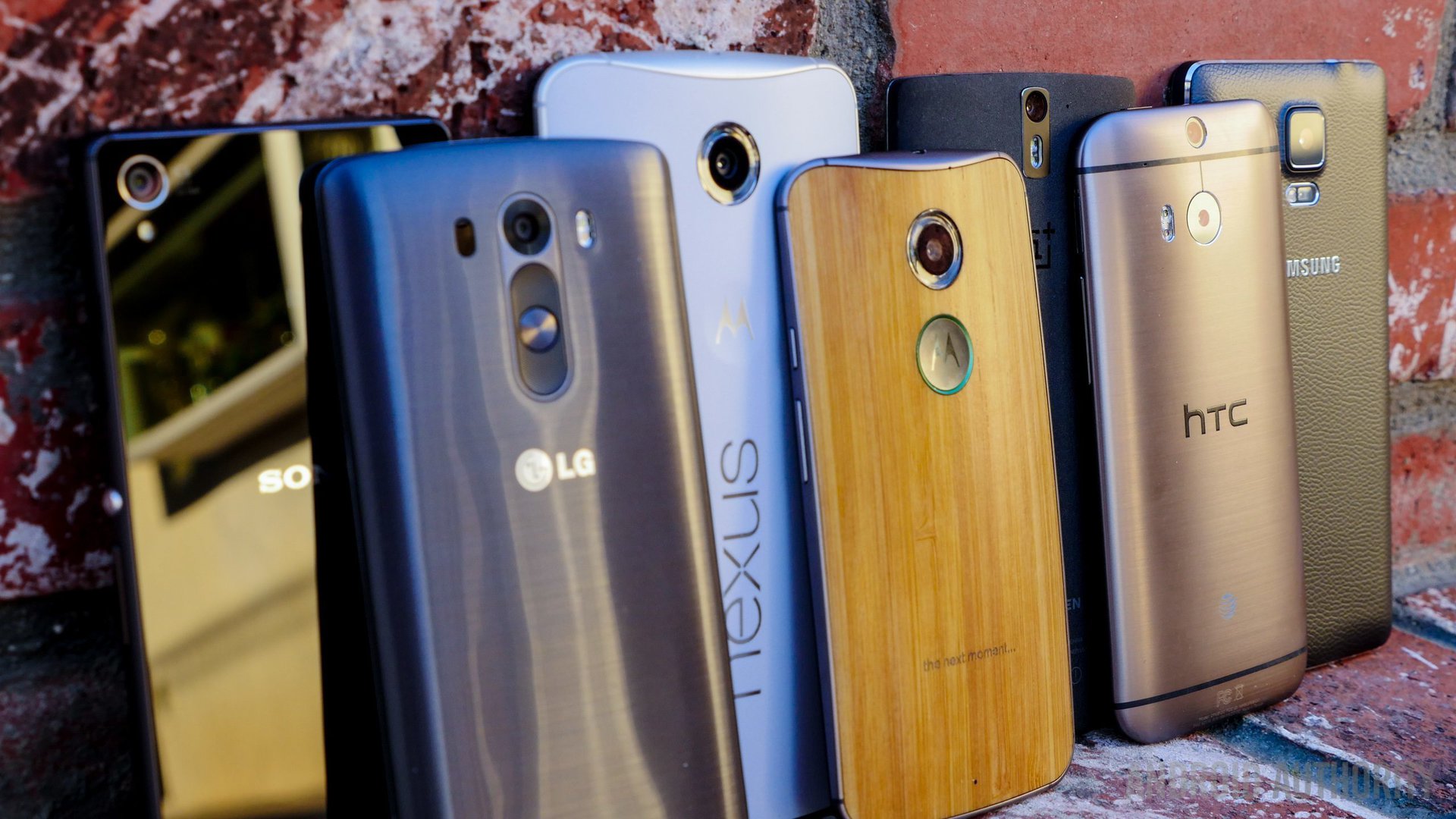
Brands like HUAWEI saw dramatic increases in market share through compelling hardware available at lower-price points. vivo, Xiaomi, and OPPO are huge brands in Asia. They don’t have as much penetration in western markets where buying power is considerably higher. But even in these companies’ home countries, lower-priced smartphones are good enough and have been so for a cycle or two.

To give you a personal example: I run a Nexus 6P. It’s now two years old and showing some signs of slowing down, but generally still performs well. The main argument against me encouraging someone else to pick up this phone now, despite a discounted price, is that Android Oreo is the last guaranteed Android version it will get. That’s a deal-breaker for many. Keeping up with software updates isn’t as easy for smartphones as it is on PC or Macs.
Will we ever see another blockbuster launch?
While it’s certainly possible, the next blockbuster launch probably won’t be for a typical flagship smartphone.
Apple tried to knock our socks off with the iPhone X. The questionable notch at the top of the device, and a release well after the iPhone 8 reduced the impact of its announcement.
The Google Pixel 2 announcement last week wasn’t exciting either. It looks like it will be a good phone, and the camera looks great. The tie-in with AI is currently useful, but it’s not surprising.
Looking into a crystal ball, it’s possible that something like a fully flexible device, a leap ahead in AI, or a tie-in with augmented reality could well make us sit up and pay attention. A new technology S-curve might emerge and we may get excited all over again.
Until then, launching similar-looking devices without compelling new technology won’t raise so much as an eyebrow. Even when it’s Apple.